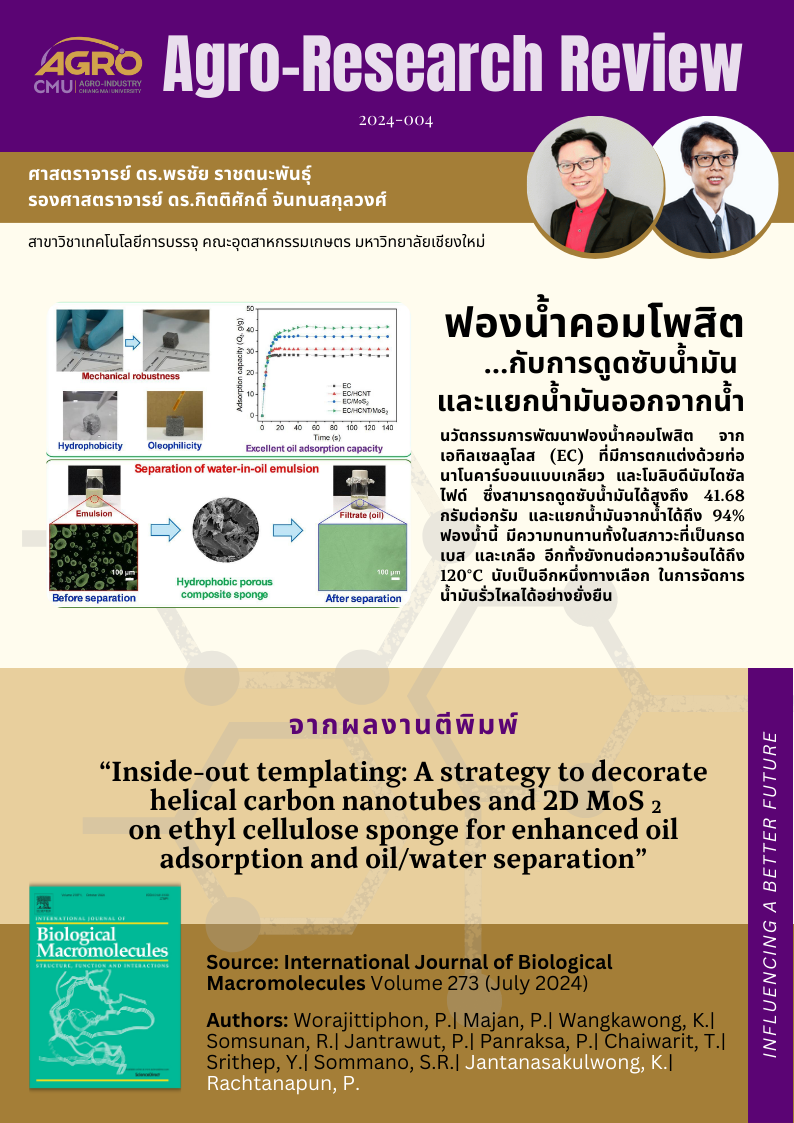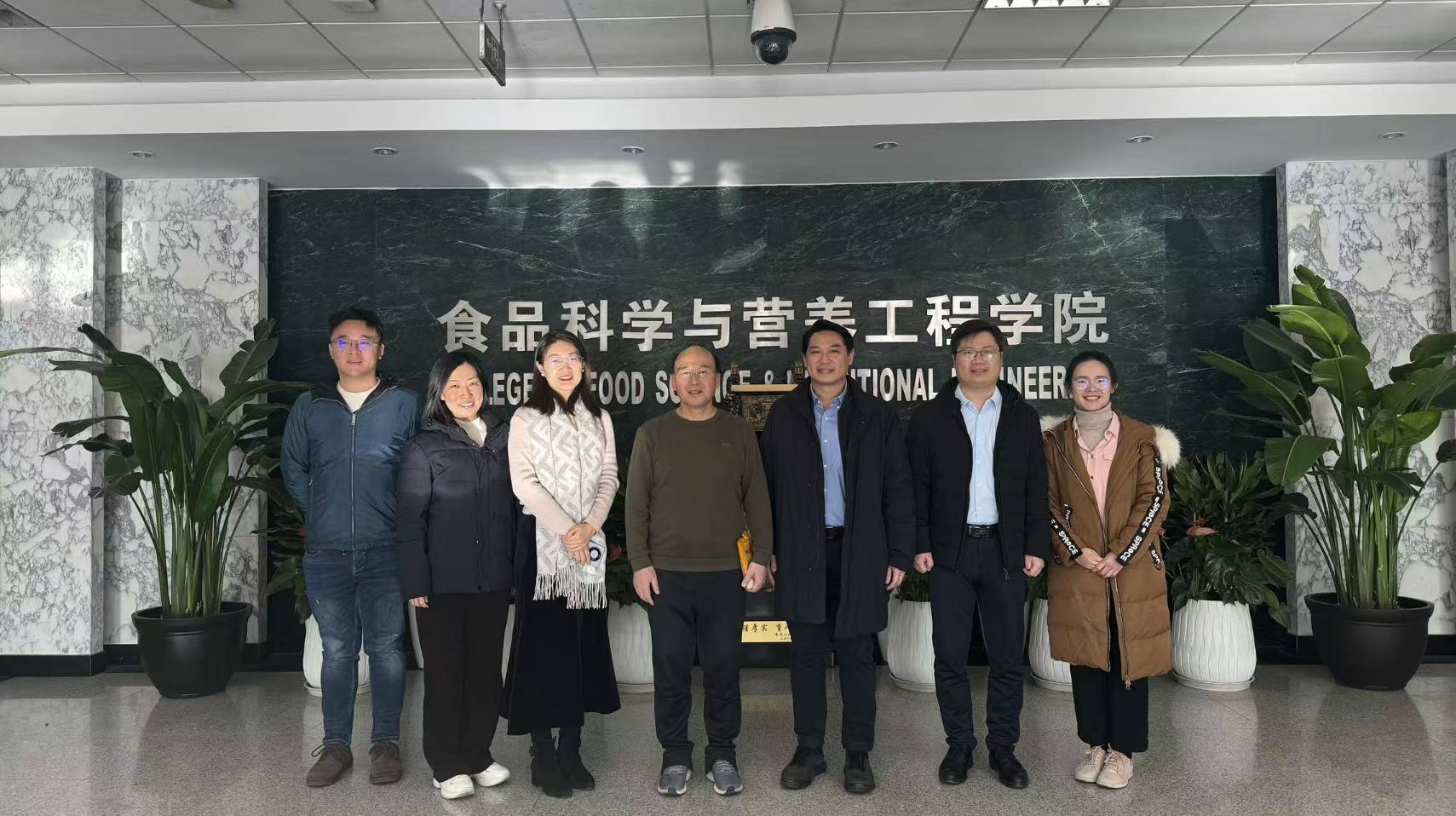
แนะนำงานวิจัย 2024-004 ฟองน้ำคอมโพสิต กับการดูดซับน้ำมันและแยกน้ำมันออกจากน้ำ
นวัตกรรมการพัฒนาฟองน้ำคอมโพสิต จากเอทิลเซลลูโลส (EC) ที่มีการตกแต่งด้วยท่อนาโนคาร์บอนแบบเกลียว และโมลิบดีนัมไดซัลไฟด์ ซึ่งสามารถดูดซับน้ำมันได้สูงถึง 41.68 กรัมต่อกรัม และแยกน้ำมันจากน้ำได้ถึง 94% ฟองน้ำนี้ มีความทนทานทั้งในสภาวะที่เป็นกรดเบส และเกลือ อีกทั้งยังทนต่อความร้อนได้ถึง 120°C นับเป็นอีกหนึ่งทางเลือก ในการจัดการน้ำมันรั่วไหลได้อย่างยั่งยืน
Innovative development of composite sponges from ethyl cellulose (EC) decorated with carbon nanotubes and molybdenum disulfide, capable of absorbing up to 41.68 grams of oil per gram and separating oil from water with 94% efficiency. These sponges are durable in acidic, basic, and saline conditions and can withstand heat up to 120°C, offering a sustainable solution for oil spill management.
Topic: Inside-out templating: A strategy to decorate helical carbon nanotubes and 2D MoS2 on ethyl cellulose sponge for enhanced oil adsorption and oil/water separation
Authors: Worajittiphon, P.| Majan, P.| Wangkawong, K.| Somsunan, R.| Jantrawut, P.| Panraksa, P.| Chaiwarit, T.| Srithep, Y.| Sommano, S.R.| Jantanasakulwong, K.| Rachtanapun, P.
Abstract:
Ethyl cellulose (EC)-based composite sponges were developed for oil spillage treatment. The EC sponge surface was decorated with helical carbon nanotubes (HCNTs) and molybdenum disulfide (MoS2) (1 phr) using the inside-out sugar templating method. The inside surface of a sugar cube was coated with HCNTs and MoS2. After filling the sugar cube pores with EC and the subsequent sugar leaching, the decorating materials presented on the sponge surface. The EC/HCNT/MoS2 sponge had a high level of oil removal based on its adsorption capacity (41.68 g/g), cycled adsorption (∼75–79 %), separation flux efficiency (∼85–95 %), and efficiency in oil/water emulsion separation (92–94 %). The sponge maintained adsorption capacity in acidic, basic, and salty conditions, adsorbed oil under water, and functioned as an oil/water separator in a continuous pump-assisted system. The compressive stress and Young's modulus of the EC sponge increased following its decoration using HCNTs and MoS2. The composite sponge was robust based on cycled compression and was thermally stable up to ∼120 οC. Based on the eco-friendliness of EC, the low loading of HCNTs and MoS2, and sponge versatility, the developed EC/HCNT/MoS2 sponge should be good candidate for use in sustainable oil adsorption and separation applications.
Keywords: Ethyl cellulose; Helical carbon nanotubes; MoS2; Oil adsorption; Oil/water separation; Water treatment
View at publisher:
https://www.sciencedirect.com/science/article/abs/pii/S0141813024039242?via%3Dihub
#อกมช. #agrocmu #CMU



